Tobago |
|
|
|
| Übersicht – Contents: | |
Tobago |
|
|
|
| Übersicht – Contents: | |
Flaggen – Flags: |
|
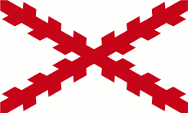 |
16./17. Jhd/cent., Die Insel gehört zum spanischen Einflussbereich – The island belongs to the Spanish sphere of influence, Quelle/Source, nach/by: Flags of the World |
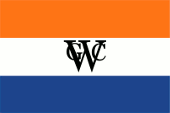 |
17./18. Jhd/cent., Nieuw Walcheren, Flagge der Niederländischen Westindien-Kompanie – flag of the Dutch West India Company, Seitenverhältnis – ratio = 2:3, Quelle/Source, nach/by: Wikipedia (EN) |
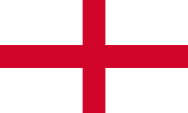 |
17./18. Jhd/cent., Flagge von England – flag of England, Seitenverhältnis – ratio = 2:3, Quelle/Source, nach/by: Die Welt der Flaggen |
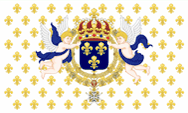 |
17./18. Jhd/cent., Flagge von Frankreich – flag of France, Quelle/Source, nach/by: Sodacan [CC BY-SA 3.0], via Wikimedia Commons  |
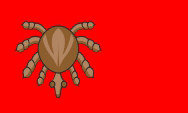 |
1680–1693, Neukurland, |
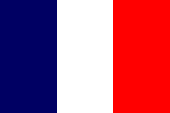 |
1802–1803, Flagge von Frankreich – flag of France, Seitenverhältnis – ratio = 2:3, Quelle/Source, nach/by: Corel Draw 4  |
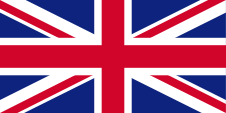 |
1803–1962, Union Flag → quasi Nationalflagge, Flagge Großbritanniens – flag of United Kingdom, Seitenverhältnis – ratio = 1:2, Quelle/Source, nach/by: Flags of the World   |
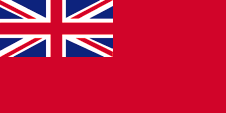 |
1864–1962, |
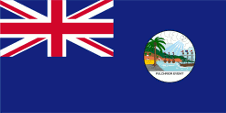 |
1877–1880, Tobago, Flagge der Regierung (Staatsflagge) – flag of the government (state flag), Seitenverhältnis – ratio = 1:2, Quelle/Source, nach/by: Flags of the World |
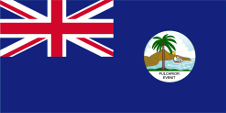 |
1880–1889, Tobago, Flagge der Regierung (Staatsflagge) – flag of the government (state flag), Seitenverhältnis – ratio = 1:2, Quelle/Source, nach/by: Flags of the World |
 |
1889, Tobago, Flagge der Regierung (Staatsflagge) – flag of the government (state flag), Seitenverhältnis – ratio = 1:2, Quelle/Source, nach/by: Flags of the World |
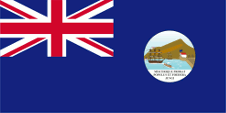 |
1889–1958, Trinidad & Tobago, Flagge der Regierung (Staatsflagge) – flag of the government (state flag), Seitenverhältnis – ratio = 1:2, Quelle/Source, nach/by: Flags of the World |
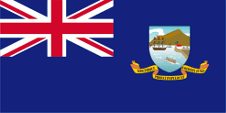 |
1958–1962, Trinidad & Tobago, Flagge der Regierung (Staatsflagge) – flag of the government (state flag), Seitenverhältnis – ratio = 1:2, Quelle/Source, nach/by: Flags of the World |
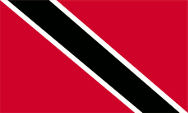 |
seit/since 1962, Trinidad & Tobago, Nationalflagge – national flag, Seitenverhältnis – ratio = 3:5, Quelle/Source, nach/by: Flags of the World   |
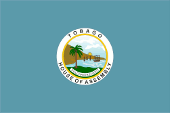 |
seit/since 1980, Tobago, Flagge des House of Assembly – flag of the House of Assembly, Seitenverhältnis – ratio = 2:3, Quelle/Source, nach/by: Flags of the World |
Windward-Inseln – Windward Islands (1833–1958): |
|
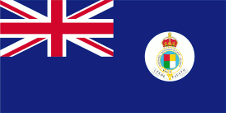 |
1886–1958, zweifelhaft – doubtful, Flagge der Regierung (Staatsflagge) – flag of the government (state flag), Seitenverhältnis – ratio 1:2, Quelle/Source, nach/by: Flags of the World |
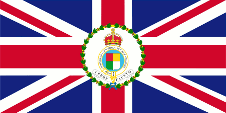 |
1886–1960, Flagge des Gouverneurs – flag of the Governor, Seitenverhältnis – ratio 1:2, Quelle/Source, nach/by: Flags of the World |
| In der
sehr bewegten Geschichte der Insel wechselten deren Besitzer oft, und damit
die hier verwendeten Flaggen. Zuletzt hatte sich Großbritannien im Jahre
1803 den Besitz der Insel gesichert, so das ab jenem Jahr die Flagge von
Großbritannien unangefochten über der Insel wehte, die zwischen 1838 und
1889 administrativ zur britischen Kolonie der Windward-Inseln gehörte. Die
Windward-Inseln waren Teil des United Kingdom, hatten eine eigene Verwaltung
und einen eigenen Gouverneur. An Land, bis 1864 auch zur See,
repräsentierten der einzelne Bürger und auch die Behörden ihren Status als
Bürger oder Organe des United Kingdom, durch die Verwendung des Union Jack,
"Union Flag" genannt. Großbritannien hatte in Jahr 1864 ein Flaggensystem eingeführt, in dem: • Kriegsschiffe einen sogenannten "White Ensign" (Marineflagge), eine weiße Flagge oft mit durchgehendem roten Georgskreuz und mit dem Union Jack in der Oberecke, • Handelsschiffe einen "Red Ensign" (auch "Civil Ensign" → Bürgerflagge genannt, die eigentl. Handelsflagge), eine rote Flagge mit dem Union Jack in der Oberecke, und • Dienstschiffe einen "Blue Ensign" (Regierungsflagge → die eigentliche Staatsflagge), eine blaue Flagge mit dem Union Jack in der Oberecke führten. Seit 1865 durften Schiffe von Kolonialregierungen einen Blue Ensign mit einem Badge (Abzeichen) im fliegenden Ende verwenden. Für alle anderen Zwecke war ab diesem Zeitpunkt an Land ausschließlich der britische Union Jack zu verwenden und zur See die übliche rote britische Handelsflagge, der "Red Ensign". Wenn die britische Admiralität der Kolonie die entsprechende Erlaubnis erteilt hatte, durften Handelsschiffe und private Seeleute dieser Kolonien einen Red Ensign mit dem Bagde führen. Dies war für Tobago und auch die Windward Inseln nicht der Fall. Die jeweiligen Regierungen sollten entsprechende Bagdes zur Verfügung stellen. Ein solches Badge war oft eine auf einer Scheibe platzierte regionale landschaftliche Darstellung, zeigte oft Schiffe, historische Begebenheiten oder konnte auch nur eine Art Logo sein. Sehr oft zeigte ein Badge zusätzlich den Namen des Landes oder auch einen Wahlspruch. Einige Besitzungen hatten aber auch schon von Anfang an ein Wappen, bzw. erhielten über die Jahre eine eigenes Wappen und das Badge wurde abgeschafft. Um ein weitgehend einheitliches Erscheinungsbild im fliegenden Ende der Flaggen zu gewährleisten, wurden Wappen und auch andere Symbole auf einer weißen Scheibe in der Größe der früheren Badges dargestellt. Es gab hier aber auch Ausnahmen, denn einige Kolonien verwendeten diese weiße Scheibe nicht, und platzierten ihr Wappen oder auch nur das Wappenschild - manchmal auch vergrößert - direkt auf das Flaggentuch. Schon in den 40-er Jahren wurde dazu übergegangen die weißen Scheiben zu entfernen und das Wappen direkt zu platzieren oder vergrößert dazustellen. Dieser Umstellungsprozess erfolgte allmählich, nirgendwo gleichzeitig und vollständig. In einigen britischen Besitzungen sind bis heute Flaggen mit der weißen Scheibe in Gebrauch, in anderen nicht mehr und in einigen Gebieten gibt es beide Varianten nebeneinander. Die Windward-Inseln erhielten im Jahre 1886 ein eigenes Badge. Es zeigte einen vierfach geteilten Schild mit den Farben Rot, Gelb, Grün und Weiß, umgeben von einem weißen Gurt mit der Inschrift "Governor in Chief, Windward Islands", oberhalb die britische Krone. Unterhalb ein weißes Spruchband mit dem Motto der Inseln: "i pede fausto" → "Gehe mit gesegnetem Fuß". Die einzelnen Kolonien der Windward-Inseln führten jedoch ihre eigenen "Blue Ensigns" mit einem eigenen Badge, lediglich der Gouverneur nutzte das Badge auf seiner Flagge. Ein "Blue Ensign" für die Windward-Inseln könnte dennoch existiert haben. Ab 1877 verwendete die Regierung von Tobago, als britische Kolonie, die blaue britische Dienstflagge (Blue Ensign) mit einem Badge im wehenden Teil der Flagge. Das 1877 eingeführte Badge zeigte eine gebirgige Küstenlandschaft mit einer Ortschaft und Feldern, in den Küstengewässern liegen vier Schiffe (3 davon drei im Hintergrund) mit gerefften Segeln auf der Reede. Im Vordergrund steht eine Palme. Der untere Teil der Scheibe zeigt das Motto der Insel auf einer weißen Fläche: "Pulchrior evenit" → "Sie wird immer schöner". Das Badge wurde wahrscheinlich 1880 abgeändert, es zeigte jetzt die Landschaft ohne eine Ortschaft aber mit einer aufgehenden Sonne, lediglich ein Segelschiff unter vollen Segeln an der Küste und im Vordergrund die Palme und unten wieder das Motto. Im Jahre 1889 – es ist das Jahr in dem Tobago der Verwaltung von Trinidad unterstellt wurde – wurde noch mal ein neues Badge eingeführt. Es zeigte jetzt die Landschaft ohne eine Ortschaft aber wieder mit einer aufgehenden Sonne, in den Küstengewässern liegen vier Schiffe (3 davon drei im Hintergrund) mit gerefften Segeln auf der Reede. Im Vordergrund erscheint wieder die Palme und unten wieder das Motto. Das Badge erscheint seit 1980 in der Flagge des Abgeordnetenhauses des mittlerweile autonomen Tobago. |
During
the island's very eventful history, its owners changed often, and with it
the flags used here. United Kingdom last secured ownership of the island in
1803, so that from that year the flag of United Kingdom flew unchallenged
over the island, which administratively belonged to the British colony of
the Windward Islands between 1838 and 1889. The Windward Islands were part of the United Kingdom and had their own administration and governor. On land, and until 1864 also at sea, the individual citizen and also the authorities represented their status as citizens or organs of the United Kingdom by the use of the Union Jack, called the "Union Flag". United Kingdom had introduced a flag system in 1864 in which: • War ships use a so-called "White Ensign" (naval flag), a white flag often with a red St. George's cross throughout and with the Union Jack in the upper corner, • Merchant ships use a so-called "Red Ensign" (also called "Civil Ensign" → citizen flag, the actual merchant flag), a red flag with the Union Jack in the upper corner, and • Governmental ships use a "Blue Ensign" (flag of the government → the actual state flag), a blue flag with the Union Jack in the upper orner. Since 1865, colonial government ships were permitted to use a Blue Ensign with a badge in the flying end. From this point on, only the British Union Jack was to be used for all other purposes on land and the usual red British merchant flag, the "Red Ensign", at sea. If the British Admiralty had granted the appropriate permission to one colony, merchant ships and private sailors from this colony were allowed to use a Red Ensign with the Bagde. This was not the case for Tobago or the Windward Islands. The respective governments should provide appropriate bagdes. Such a badge was often a regional landscape representation placed on a disk, often showed ships, historical events or could just be a kind of logo. Very often a badge also showed the name of the country or a motto. However, some possessions had a coat of arms right from the start, or received their own coat of arms over the years and the badge was abolished. In order to ensure a largely uniform appearance in the flying end of the flags, coats of arms and other symbols were displayed on a white disk the same size as the earlier badges. But there were exceptions here, as some colonies did not use this white disk and placed their coat of arms or just the shield – sometimes enlarged – directly on the flag cloth. As early as the 1940s, the white discs were removed and the coat of arms was placed directly or enlarged. This transition process occurred gradually, never simultaneously and completely. In some British possessions flags with the white disc are still in use, in others they are no longer used and in some areas both variants exist side by side. The Windward Islands received their own badge in 1886. It featured a fourfold shield with the colors red, yellow, green and white, surrounded by a white belt with the inscription "Governor in Chief, Windward Islands", above which was the British crown. Below there is a white banner with the islands' motto: "i pede fausto" → "Walk with a blessed foot". However, the individual colonies of the Windward Islands had their own "Blue Ensigns" with their own badge; only the governor used the badge on his flag. A "Blue Ensign" for the Windward Islands may still have existed. From 1877, the government of Tobago, as a British colony, used the blue British official flag (Blue Ensign) with a badge in the waving part of the flag. The badge, introduced in 1877, showed a mountainous coastal landscape with a town and fields; four ships (three of them in the background) with reefed sails in coastal waters in the roadstead. There is a palm tree in the foreground. The lower part of the disc shows the island's motto on white surface: "Pulchrior evenit" → "It becomes more and more beautiful". The badge was probably changed in 1880, it now showed the landscape without a town but with a rising sun, just a sailing ship in full sail on the coast and the palm tree in the foreground and the motto again at the bottom. In 1889 – the year in which Tobago was placed under the administration of Trinidad – a new badge was introduced again. It now showed the landscape without a town but again with a rising sun, in the coastal waters four ships (three of them in the background) in coastal waters in the roadstead with reefed sails. The palm tree appears again in the foreground and the motto again at the bottom. The badge appeares in the flag of the House of Assembly since 1980. |
| Quelle/Source: Die Welt der Flaggen, World Statesmen, Flags of the World, Volker Preuß | |
Wappen – Coat of Arms: |
|
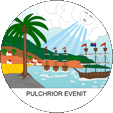 |
1877–1880, Emblem von Tobago – Badge of Tobago, Quelle/Source, nach/by: Flags of the World |
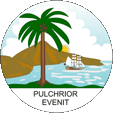 |
1880–1889, Emblem von Tobago – Badge of Tobago, Quelle/Source, nach/by: Flags of the World |
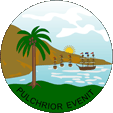 |
1889, Emblem von Tobago – Badge of Tobago, Quelle/Source, nach/by: Flags of the World |
| Das 1877 eingeführte Badge zeigte eine gebirgige Küstenlandschaft mit einer Ortschaft und Feldern, in den Küstengewässern liegen vier Schiffe (3 davon drei im Hintergrund) mit gerefften Segeln auf der Reede. Im Vordergrund steht eine Palme. Der untere Teil der Scheibe zeigt das Motto der Insel auf einer weißen Fläche: "Pulchrior evenit" → "Sie wird immer schöner". Das Badge wurde wahrscheinlich 1880 abgeändert, es zeigte jetzt die Landschaft ohne eine Ortschaft aber mit einer aufgehenden Sonne, lediglich ein Segelschiff unter vollen Segeln an der Küste und im Vordergrund die Palme und unten wieder das Motto. Im Jahre 1889 – es ist das Jahr in dem Tobago der Verwaltung von Trinidad unterstellt wurde – wurde noch mal ein neues Badge eingeführt. Es zeigte jetzt die Landschaft ohne eine Ortschaft aber wieder mit einer aufgehenden Sonne, in den Küstengewässern liegen vier Schiffe (3 davon drei im Hintergrund) mit gerefften Segeln auf der Reede. Im Vordergrund erscheint wieder die Palme und unten wieder das Motto. Das Badge erscheint seit 1980 in der Flagge des Abgeordnetenhauses des mittlerweile autonomen Tobago. |
The badge, introduced in
1877, showed a mountainous coastal landscape with a village and fields; four
ships (three of them in the background) with reefed sails in coastal waters
in the roadstead. There is a palm tree in the foreground. The lower part of
the disc shows the island's motto on white surface: "Pulchrior evenit" →
"It becomes more and more beautiful". The badge was probably changed in 1880, it now showed the landscape without a town but with a rising sun, just a sailing ship in full sail on the coast and the palm tree in the foreground and the motto again at the bottom. In 1889 – the year in which Tobago was placed under the administration of Trinidad – a new badge was introduced again. It now showed the landscape without a village but again with a rising sun, in the coastal waters four ships (three of them in the background) in coastal waters in the roadstead with reefed sails. The palm tree appears again in the foreground and the motto again at the bottom. The badge appeares in the flag of the House of Assembly since 1980. |
| Quelle/Source: World Statesmen, Flags of the World, Volker Preuß | |
Landkarte – Map: |
Lage – Position: |
|
Landkarte des Landes – Map of the Country:
Größere Karte anzeigen – View larger map Keine Karte? No map? → |
|
|
| Zahlen und Fakten – Numbers and Facts: | |
|
|
|
|
|
|
|
|
|
|
|
|
|
|
|
|
|
|
04.08.1498 · die Insel wird wahrscheinlich von Kolumbus entdeckt und für Spanien Spanien in Besitz genommen, Kolumbus nennt sie "Bella Forma", nach anderen Quellen "Isla de la Asunción" |
|
4th of August in 1498 · the island is probably discovered by Columbus and he took possession for Spain, Columbus names it "Bella Forma", according to other sources "Isla de la Asunción" 1502 · the Spanish sailors Alonzo de Ojeda and Juan de la Cosa visit the island and name it "Isla La Magdalena", then the island is called "Tavaco", later "Tabagua" and finally "Tobago", there is no continuous Spanish settlement and colonization 1628–1636 · Dutch colony "Nieuw Walcheren", operated by the Dutch West India Company 1654–1659 · the Duchy of Courland operates the colony "Neu Kurland" in the northwest of the island 1666–1680 · the island is repeatedly occupied, managed or claimed by England (later United Kingdom), France, Spain, the Netherlands and Courland 1680–1693 · the Duchy of Courland again operates the colony "New Courland" 1748 · Tobago is declared a neutral territory 1763 · United Kingdom acquires Tobago with the Treaty of Paris 1764–1781 · Tobago is a British colony 1781–1793 · Tobago is a French colony 1793 · United Kingdom occupies Tobago 1802–1803 · Tobago is a French colony 1803 · Tobago becomes a British crown colony 1833–1889 · Tobago is part of the British colony of the Windward Islands 1st of January in 1889 · Tobago is placed under the administration of Trinidad 1st of January in 1899 · Tobago is united with Trinidad to form the colony of Trindad and Tobago 1959 · the island of Tobago receives its own administrative department, from 1964 a ministry, and from 1977 has an independent part of the central administration 31st of August 1962 · United Kingdom grants Trindad and Tobago independence in the framework of the Commonwealth of Nations, the country becomes a constitutional monarchy under the British monarch as chief of state 1980 · the island of Tobago gains autonomy, formation of the Tobago House of Assembly |
| Quelle/Source: World Statesmen, Volker Preuß |
| Tobago wurde im Jahre 1498 durch den spanischen Seefahrer Christoph Kolumbus entdeckt. Er nannte sie "Bella Forma" (die Wohlgeformte), nach anderen Quellen "Isla de la Asunción" (Himmelfahrtsinsel). Nur wenige Jahre später wurde sie "Isla La Magdalena" genannt (Magdaleneninsel). Später hatte die Insel viele Namen, je nach ihrem jeweiligen Besitzer. So auch "Nieuw Walcheren" oder "Neukurland". Die Franzosen und Briten nannten sie "Tobago". Der Name geht auf das Wort Tabak zurück. Angeblich geht auch der Ursprung dieses Inselnamens auf Kolumbus zurück, weil er beobachtet hatte, dass die Kariben Tobacco-Blätter in einer Tambaku rauchten, und er habe der Insel darauf hin diesen Namen gegeben. | Tobago
was discovered by the Spanish seafarer Christoph Columbus in the year 1498.
He named it "Bella Forma" (the Wellshaped), by other sources "Isla de la
Asunción" (Ascension Island). Only some years later it was named "Isla La
Magdalena" (Magdalena Island). Later the island had many names, according to
its respective owner. So even "Nieuw Walcheren" or "Neukurland". The French and the British called it "Tobago". This
name has its roots in the word Tobacco. Otensibly even that island's name
has its roots in Columbus, because he watched that the Cariben smoking
Tobacco-Leafs in a Tambaku, and he used this name for the
island. |
| Quelle/Source: World Statesmen, etymonline.com, Volker Preuß | |